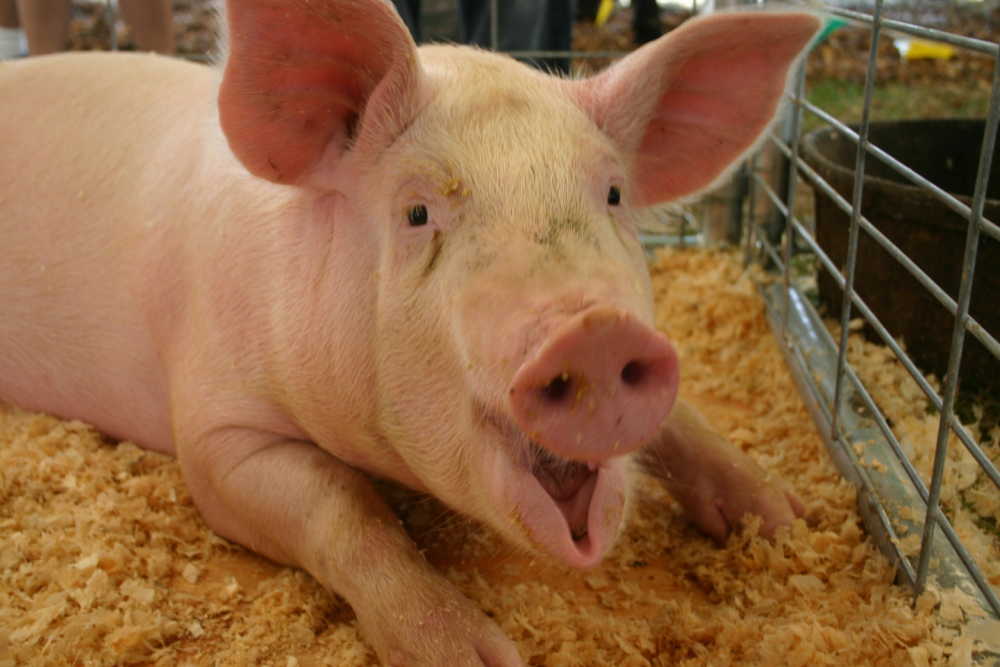
Biotechnology: Enviropigs is a standards-aligned, 5-E life science unit focused on debating the application of genetic engineering to solve an environmental problem of nutrient pollution.
Overview
This unit begins by introducing the environmental issue of phosphate pollution related to hog production. After exploring the environmental issue, students will learn more about a proposed solution, Enviropigs. Students will learn more about the biotechnology tools used to create and safety test Enviropigs. The final lesson connects science with language arts as students critically examine various texts and engage in argument from evidence in order to write an argumentative essay for or against the production and commercialization of Enviropigs for human consumption.
Lesson 1 | Nutrient Pollution and Environmental Problem Solving
- This lesson introduces students to the hog industry, the environmental challenges presented by the high levels of phosphorus found in hog manure, and using genetic engineering as a solution to this agricultural issue.
Lesson 2 | Testing Transgenics with DNA Analysis Protein Detection
- Students will learn about the use of DNA analysis to identify the presence or absence of the E. coli phytase gene in Enviropigs and non-transgenic pigs. Additionally, students will learn about the importance of protein detection as a tool to identify if a transgene is being expressed and what tests are available to test for presence/absence and quantification of protein.
Lesson 3 | Constructing an Argument
- This lesson teaches students about the difference between engaging in argument from evidence and providing a persuasive argument. Students will write an argumentative essay describing their position, for or against, the production and commercialization of Enviropigs for human consumption.
Curriculum Connections
Next Generation Science Standards
- HS-ETS1-3. Evaluate a solution to a complex real-world problem based on prioritized criteria and
trade-offs that account for a range of constraints, including cost, safety, reliability, and aesthetics as
well as possible social, cultural, and environmental impacts. - HS-ESS3-4. Evaluate or refine a technological solution that reduces impacts of human activities on
natural systems.
- Student Resources (Word Doc) (2.62 MB)
- Student Resources (PDF) (406.05 KB)
- Teacher Resources (Word Doc) (3.3 MB)
- Teacher Resources (PDF) (949.97 KB)
- Nutrient Pollution and Environmental Problem Solving - Lesson 1 Presentation (PPT) (692.37 KB)
- DNA Analysis and Protein Detection - Lesson 2 Presentation (PPT) (1.34 MB)
- Constructing an Argument - Lesson 3 Presentation (PPT) (160.04 KB)
- Article - Forsberg- An Environmentally Friendly Pig (20.8 KB)
- Article - Schmickle- Enviropig raises a whole new stink (15.32 KB)
- Article - Taylor- A Less Polluting Pig (13.32 KB)
- Article - Vestel- The Next Pig Thing (14.95 KB)
- Article - Surveys- Attitudes about Genetically Engineered Foods (35.49 KB)
- Article - Editorial, Minnesota Daily- Enviropigs will not help the environment (12.99 KB)